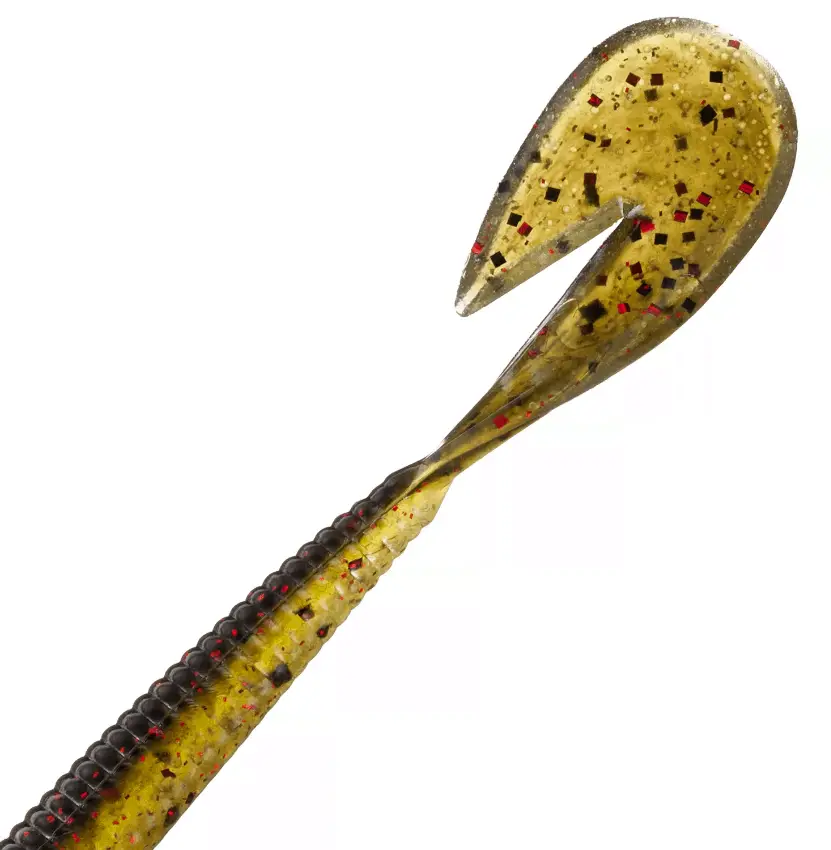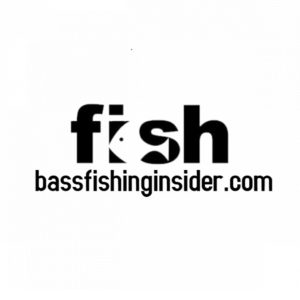
Fishing for bass in reeds requires some unique know-how and tricks to trigger a bite. When faced with lines or patches of reeds, it’s important to approach your fishing day with the right tactics so you can catch more bass. Through years of experience and research, I’ve collected some great strategies to help you fish more effectively in the reeds.
When trying to understand how to fish for bass in the reeds, fishermen should consider bait selection and the density of the reeds they are fishing. For example, flipping can catch fish tucked deep in the reeds, while topwater baits may draw bass out from the cover of reeds.
With so many options available to bass anglers, knowing where to start can be daunting. The difference between catching fish and not can result from numerous factors. Read on to see INSIDER tips and tricks to fish for bass in the reeds effectively.
Why Do Bass LOVE Reeds?
Fishing for bass in the reeds is a highly effective tactic for many reasons. Bass love reeds for a simple reason: reeds hold food for bass. Pretty simple when you get down to it. Reeds are not only an excellent environment for bass, but they are also a perfect spot for what bass like to eat – small fish, grubs, and other prey. Reeds also hold bugs, a slightly less likely prey option for bass. However, the smaller prey that bass eat DO, like bugs. So, reeds can be a perfect miniature ecosystem and cycle of life for a variety of predator-prey relationships topped by your fishing target: BASS!
Reeds can also provide an excellent habitat for spawning. Bass are known to use reed areas to bed because reeds can often be found in hard bottom areas (hard bottoms are common for bass beds).
Where to find Bass in Reeds (Tips on Where to Cast)
Reeds present unique opportunities for bass to hold tight to cover using the reeds as a holding spot for bass as they wait for prey. Bass can either rest in pockets in the reeds, sit in the outside reed edges, settle in a thick reed clump, or wait in sparse reeds as they patiently maintain a position in anticipation of their next meal.
Key Concept, The trick to locating bass in reeds is to look for slight differences or nuances in the reed pattern. Much of the reed bank can look the same. However, the key to catching bass in reeds is finding that unique spot that stands out from the rest. You may notice:
- A small point of reeds that stands out from the rest of the reeds along a bank.
- A tiny indentation or pocket that has formed, for some reason, in the line of reeds.
- A small clump of reeds set apart from the main reed line.
- A patch or a small line of reeds that is not as thick as most other reeds in the area. Conversely, a patch or line that is thicker than most.
- A patch or line with other vegetation or laydowns mixed in when most of the other reeds do NOT have other vegetation or laydowns.
- The point is clear. When fishing reeds for bass, look for something different. If you notice any of the above subtle differences, Fish it! Bass like to hold in places slightly different from the rest of the reed pattern.
Special Tip
Next, I will tell you one of the biggest tips for catching bass in the reeds. After you get a bite or catch a fish, take note of where you caught the fish. Was it on a small point? A pocket? What was the cadence of your retrieval? What color was our bait? Then, look for ways to duplicate that scenario and identify a PATTERN. Getting two bites doing the same thing likely means you have uncovered a pattern. Find that pattern in reeds, and you’ll be on your way to catching a ton of bass.
Bait Options for Catching Bass in the Reeds
Bait options for catching bass in the reeds include popular lures like spinnerbaits, swim jigs, buzzbaits, stick worms, flipping baits, prop baits, frogs, speed worms, and more. Needless to say, bait possibilities might be endless. The options reviewed in this article are some of the most effective for grabbing the attention of bass and landing more fish. Don’t see your favorite? Please comment below to share with the Bass Insider community. We love to hear your ideas!
Spinnerbaits and Swim Jigs Fishing for bass with moving baits can be highly effective in the reeds. These baits can be slow-rolled or retrieved quickly while looking for opportunities to bump the bait off reeds. This tactic is best used in sparse reeds that are not clumped together. You may also retrieve all these lures parallel to a reed edge line. Buzzbaits are a great option when bass are more active (in the morning, evening, or often during overcast weather). In typical sunny or partly cloudy conditions, generally speaking, opt for a swim jig when the wind dies down or is calm; when the wind picks up, you may want to choose a spinnerbait.
Topwater Bass fishing with topwater lures is a great way to entice a bass to leave heavy cover. Curiosity and the need to eat are two motivators that drive bass from their comfort zone. “Louder” topwater baits can effectively deliver a “come and get it” message. Topwater lures can be thrown up to a reed edge (as close as possible without getting stuck), worked parallel to the edge, or worked in sparse reeds. Popular topwater baits that attract attention include prop baits and poppers. Frogs can also be included in this category with a critical difference. Frogs can be thrown into thicker cover, while a treble hook-based topwater bait cannot.
Stick Worms Stick worms are an excellent choice for a slower presentation in calmer, sunny conditions (or any conditions, for that matter). Fishing a stick worm weightless can be an amazing technique, especially when the bite is tough. Senko is a dominant name in the stick worm market and has been mentioned and used in media and by numerous professionals as their go-to stick bait. Click here to see what Senko options Tackle Warehouse has to offer. Cast as close as possible to thick reed edges, pockets, or points and even isolated reed sparsely grouped clumps. Presenting the stick worm with a slow retrieve often creates an irresistible temptation for finicky bass. Some people even like to “dead stick” the bait, not moving it much at all.
Flipping Jig Using a flipping jig in the reeds allows bass fishermen to present the bait to specific targets more easily by employing flipping or pitching techniques. To avoid getting stuck, a weedless flipping jig is recommended. As a reminder, anglers should target specific nuances in the reeds when making their presentation. This strategy is one of the most popular methods for fishing for bass in the reeds.
 Swimming a worm — Slow rolling a worm along or through sparse clumps of reeds is one of the best methods for covering water while utilizing a slower method for catching bass. The Zoom Ultravibe Speed Worm is one of the most popular brands on the market. You can check out Speed Worms by clicking here to go to Bass Pro’s wide selection of colors and sizes. Worm fishing has been a staple tactic in the fishing world for a very long time and can pay off in significant ways for lunker bass.
Swimming a worm — Slow rolling a worm along or through sparse clumps of reeds is one of the best methods for covering water while utilizing a slower method for catching bass. The Zoom Ultravibe Speed Worm is one of the most popular brands on the market. You can check out Speed Worms by clicking here to go to Bass Pro’s wide selection of colors and sizes. Worm fishing has been a staple tactic in the fishing world for a very long time and can pay off in significant ways for lunker bass.
Special note Bass fishermen are faced with many line options, from monofilament to braid to fluorocarbon. Anglers should carefully consider line choice when reed fishing. Reeds can be abrasive and may damage line, so braid may be in order. Additionally, once a bass is hooked, the fish can dive back into or become wrapped in the reeds making braid an even more obvious choice. Finally, when flipping in reeds, braid is practically a must.
Related Questions
How Do You Fish for Bass in Lily Pads?
Pads can provide an excellent opportunity to catch a ton of bass if fished properly. Pads may be fished with frogs by flipping and swimming a jig, to name a few tactics. Lily pads tend to hold bass all year long and are known for being a great spot for consistently catching bass.
How to Fish Heavy Cover
Bass love heavy cover for a variety of reasons. Cover provides shade as well as an ambush point for bass as they wait for prey. The most typical presentation for heavy cover is punching. Punching involves using a weight heavier than normal coupled with a flipping jig to punch through the cover to the underlying fish. Work the jig slowly to elicit big bass bites.
